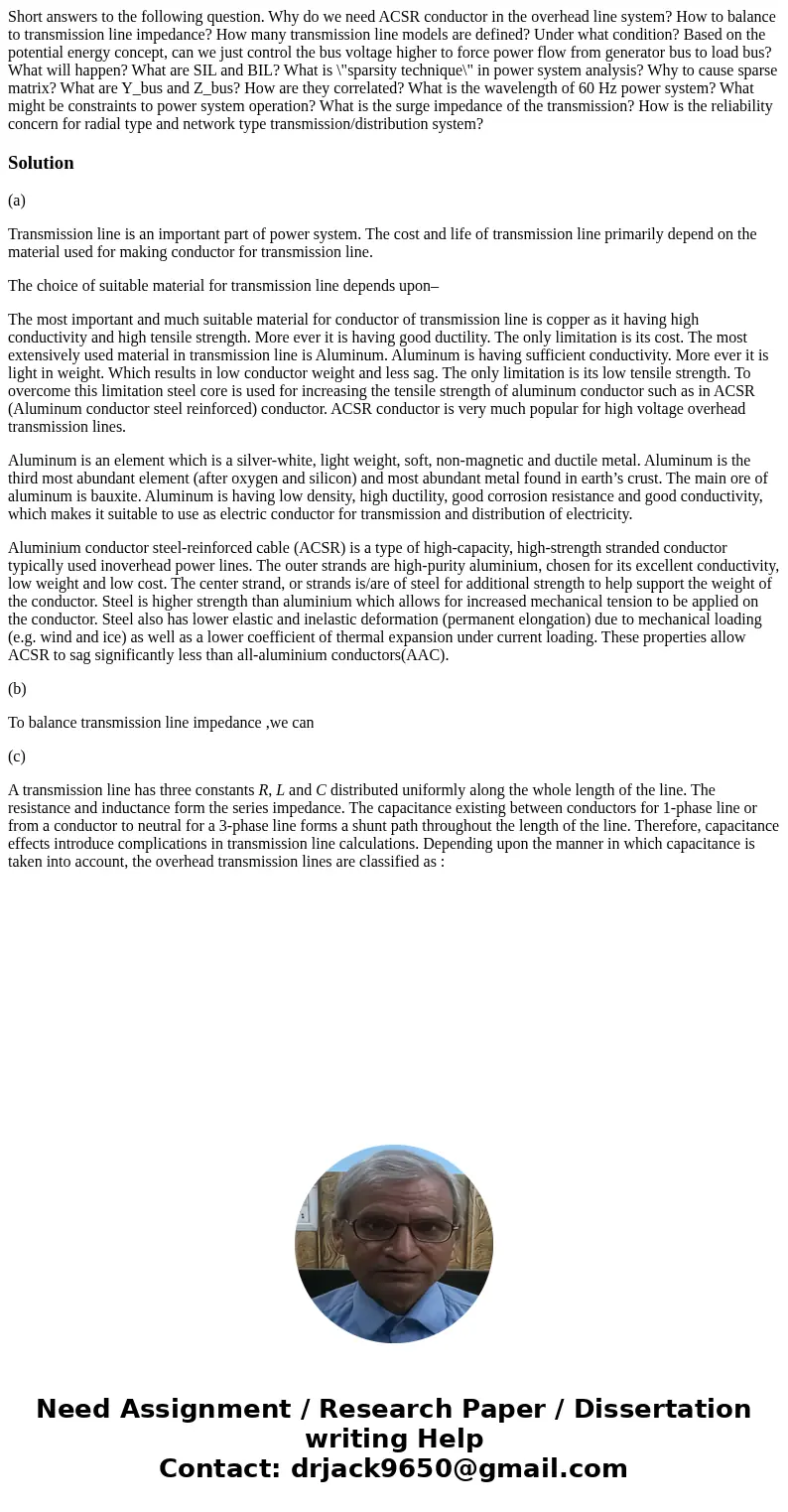Short answers to the following question Why do we need ACSR
Solution
(a)
Transmission line is an important part of power system. The cost and life of transmission line primarily depend on the material used for making conductor for transmission line.
The choice of suitable material for transmission line depends upon–
The most important and much suitable material for conductor of transmission line is copper as it having high conductivity and high tensile strength. More ever it is having good ductility. The only limitation is its cost. The most extensively used material in transmission line is Aluminum. Aluminum is having sufficient conductivity. More ever it is light in weight. Which results in low conductor weight and less sag. The only limitation is its low tensile strength. To overcome this limitation steel core is used for increasing the tensile strength of aluminum conductor such as in ACSR (Aluminum conductor steel reinforced) conductor. ACSR conductor is very much popular for high voltage overhead transmission lines.
Aluminum is an element which is a silver-white, light weight, soft, non-magnetic and ductile metal. Aluminum is the third most abundant element (after oxygen and silicon) and most abundant metal found in earth’s crust. The main ore of aluminum is bauxite. Aluminum is having low density, high ductility, good corrosion resistance and good conductivity, which makes it suitable to use as electric conductor for transmission and distribution of electricity.
Aluminium conductor steel-reinforced cable (ACSR) is a type of high-capacity, high-strength stranded conductor typically used inoverhead power lines. The outer strands are high-purity aluminium, chosen for its excellent conductivity, low weight and low cost. The center strand, or strands is/are of steel for additional strength to help support the weight of the conductor. Steel is higher strength than aluminium which allows for increased mechanical tension to be applied on the conductor. Steel also has lower elastic and inelastic deformation (permanent elongation) due to mechanical loading (e.g. wind and ice) as well as a lower coefficient of thermal expansion under current loading. These properties allow ACSR to sag significantly less than all-aluminium conductors(AAC).
(b)
To balance transmission line impedance ,we can
(c)
A transmission line has three constants R, L and C distributed uniformly along the whole length of the line. The resistance and inductance form the series impedance. The capacitance existing between conductors for 1-phase line or from a conductor to neutral for a 3-phase line forms a shunt path throughout the length of the line. Therefore, capacitance effects introduce complications in transmission line calculations. Depending upon the manner in which capacitance is taken into account, the overhead transmission lines are classified as :

 Homework Sourse
Homework Sourse